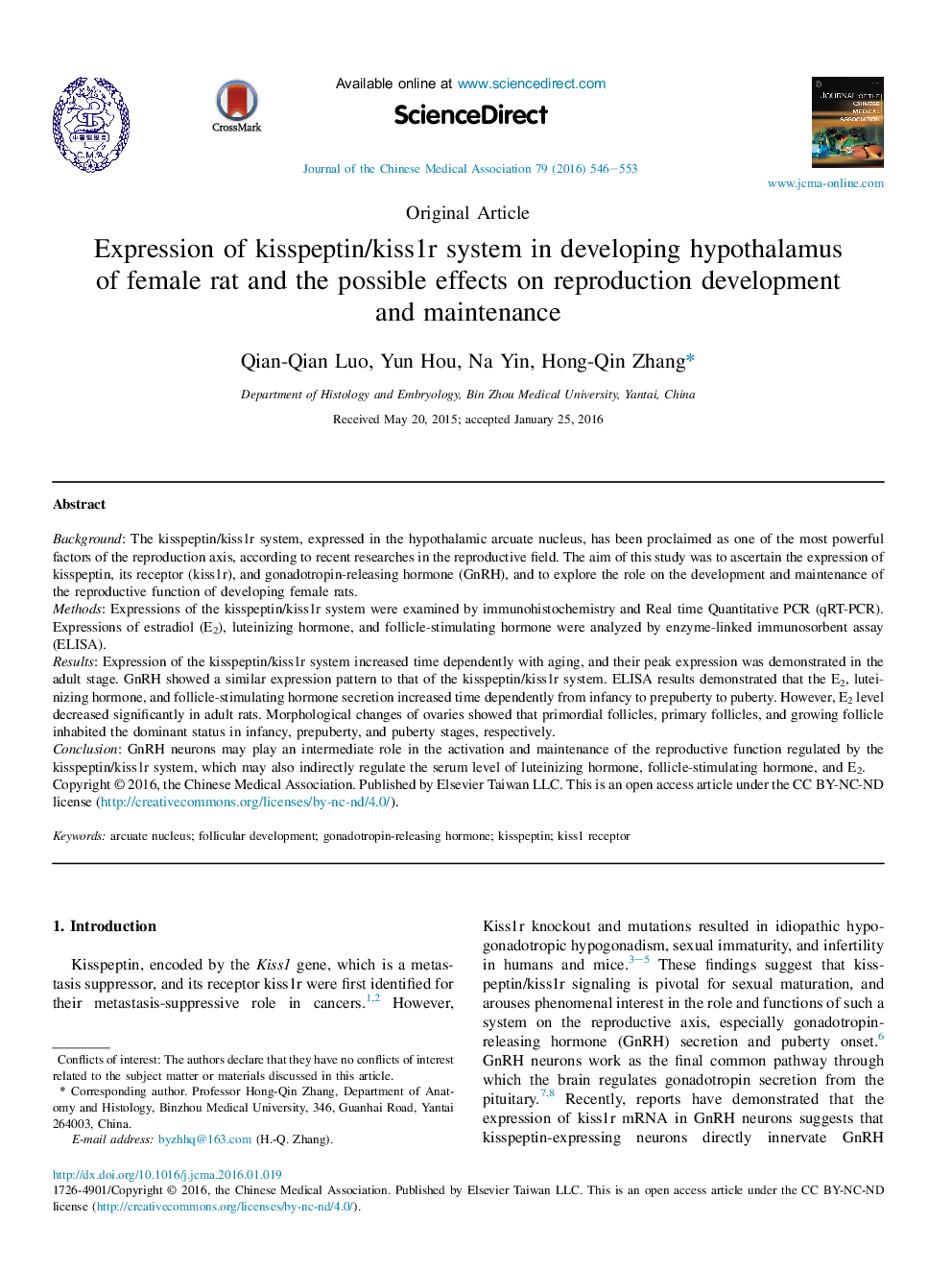| Article ID | Journal | Published Year | Pages | File Type |
|---|---|---|---|---|
| 3475697 | Journal of the Chinese Medical Association | 2016 | 8 Pages |
BackgroundThe kisspeptin/kiss1r system, expressed in the hypothalamic arcuate nucleus, has been proclaimed as one of the most powerful factors of the reproduction axis, according to recent researches in the reproductive field. The aim of this study was to ascertain the expression of kisspeptin, its receptor (kiss1r), and gonadotropin-releasing hormone (GnRH), and to explore the role on the development and maintenance of the reproductive function of developing female rats.MethodsExpressions of the kisspeptin/kiss1r system were examined by immunohistochemistry and Real time Quantitative PCR (qRT-PCR). Expressions of estradiol (E2), luteinizing hormone, and follicle-stimulating hormone were analyzed by enzyme-linked immunosorbent assay (ELISA).ResultsExpression of the kisspeptin/kiss1r system increased time dependently with aging, and their peak expression was demonstrated in the adult stage. GnRH showed a similar expression pattern to that of the kisspeptin/kiss1r system. ELISA results demonstrated that the E2, luteinizing hormone, and follicle-stimulating hormone secretion increased time dependently from infancy to prepuberty to puberty. However, E2 level decreased significantly in adult rats. Morphological changes of ovaries showed that primordial follicles, primary follicles, and growing follicle inhabited the dominant status in infancy, prepuberty, and puberty stages, respectively.ConclusionGnRH neurons may play an intermediate role in the activation and maintenance of the reproductive function regulated by the kisspeptin/kiss1r system, which may also indirectly regulate the serum level of luteinizing hormone, follicle-stimulating hormone, and E2.
